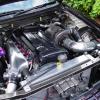Water Feed For Turbo
Announcements
-
Similar Content
-
Latest Posts
-
By joshuaho96 · Posted
That's basically how I've been driving my R33 for a while now. GTIII-SS running wastegate boost. It makes no more power than stock because the turbos aren't flowing any more air than stock. Eventually though I need to fix this so it can actually drive as it should. -
By Dose Pipe Sutututu · Posted
If this was my own car, I would pull about 5 degrees off the CAS, run a wideband, and if that seems ok, send it. -
By joshuaho96 · Posted
Run a 7 psi wastegate and wastegate boost and it might be ok on the stock ECU. Basically you cannot run past the last load cell by a significant margin. -
By joshuaho96 · Posted
If there's no stutter in fuel pressure when the issue occurs then I'm not sure it's the fuel system necessarily. Do you have any Nistune logs when the issue occurs?
-






Recommended Posts
Create an account or sign in to comment
You need to be a member in order to leave a comment
Create an account
Sign up for a new account in our community. It's easy!
Register a new accountSign in
Already have an account? Sign in here.
Sign In Now